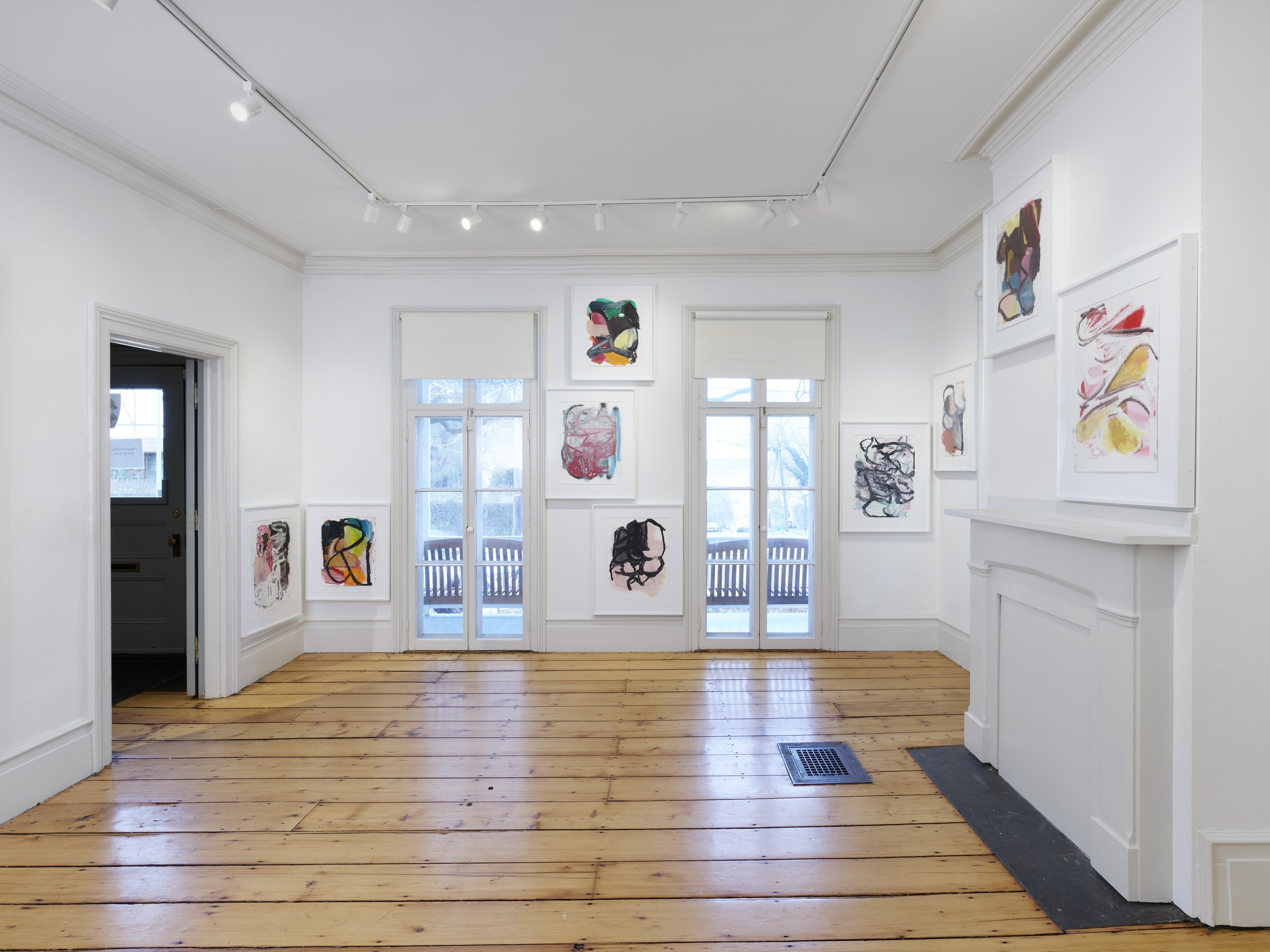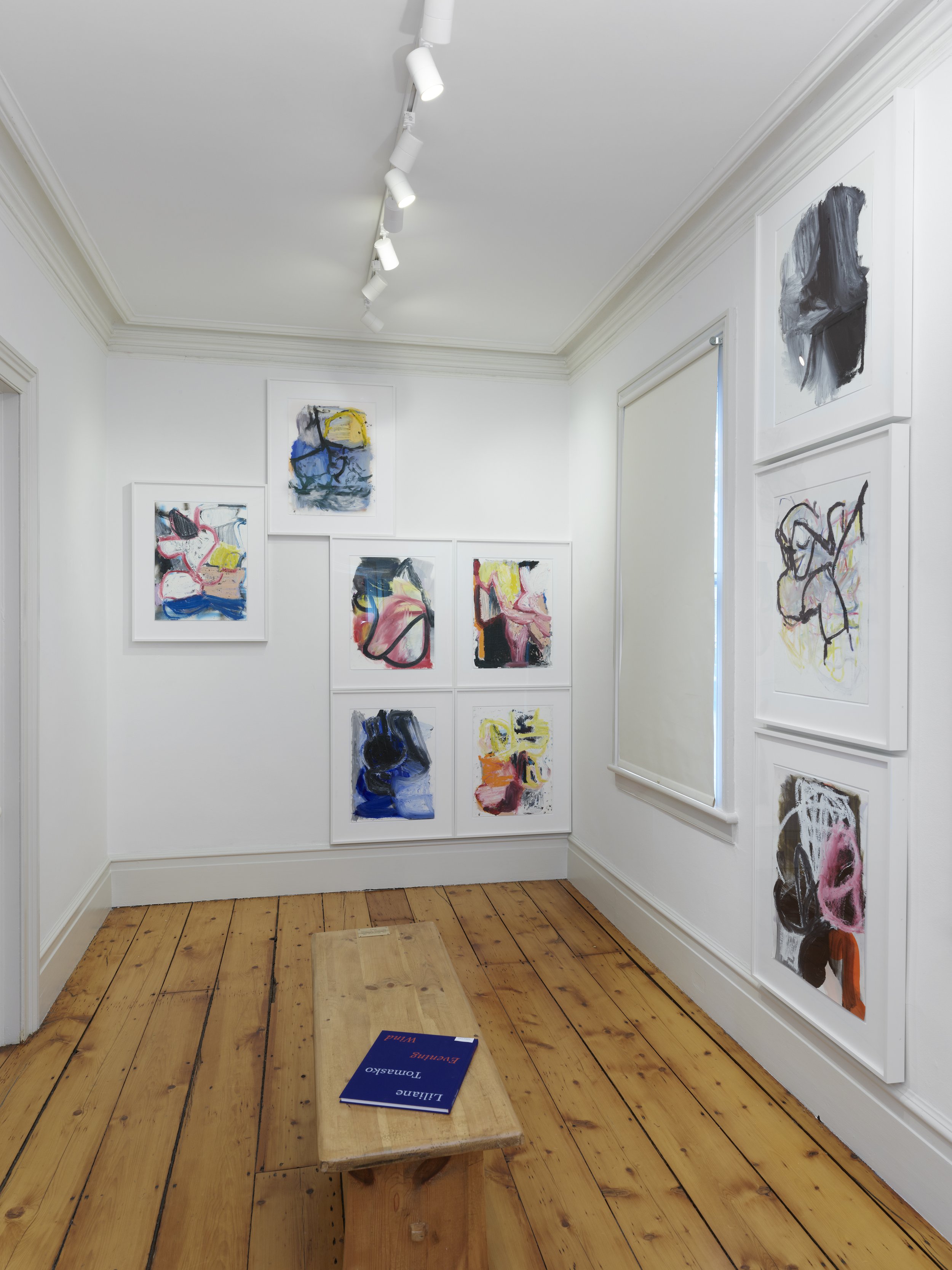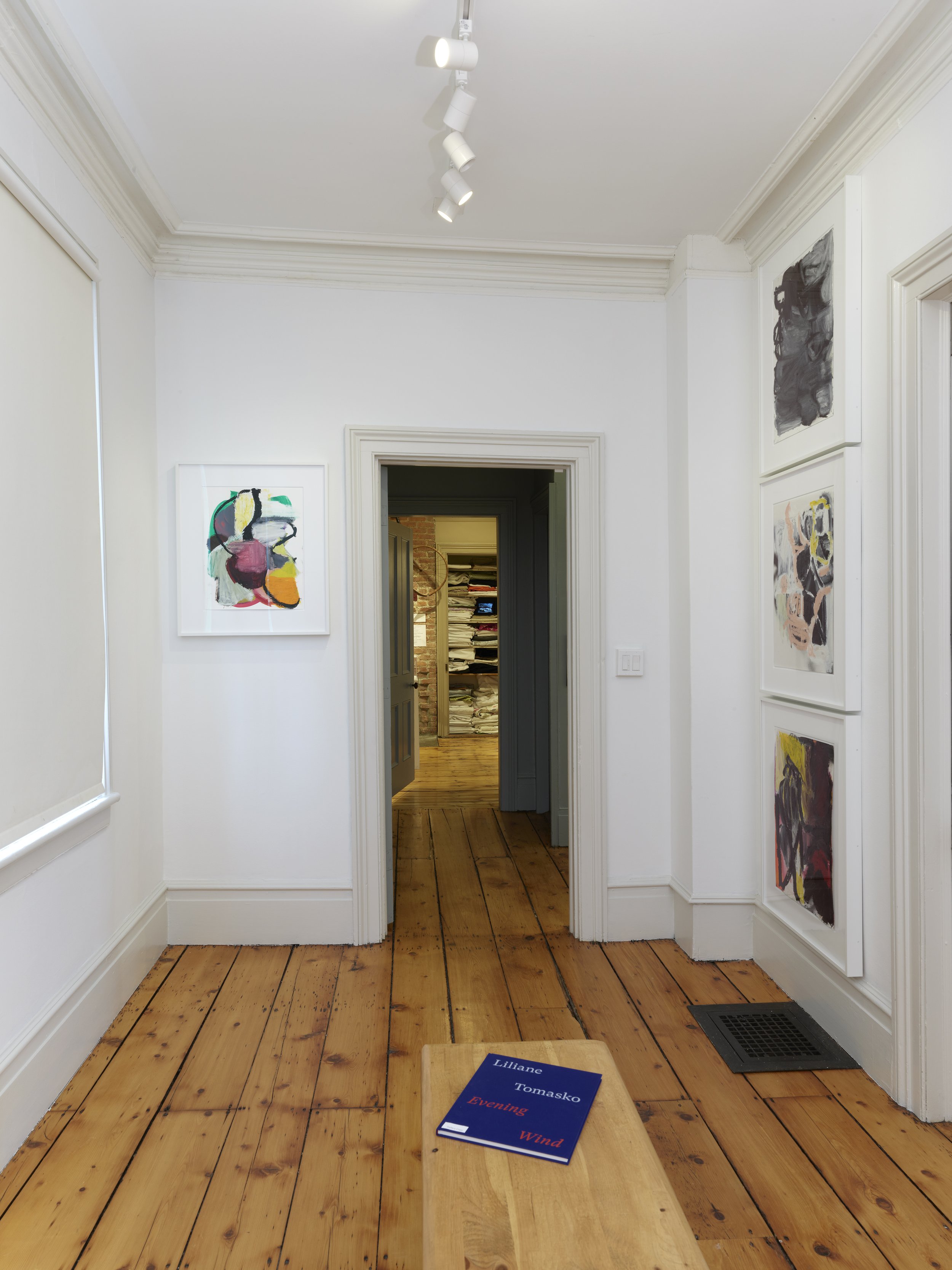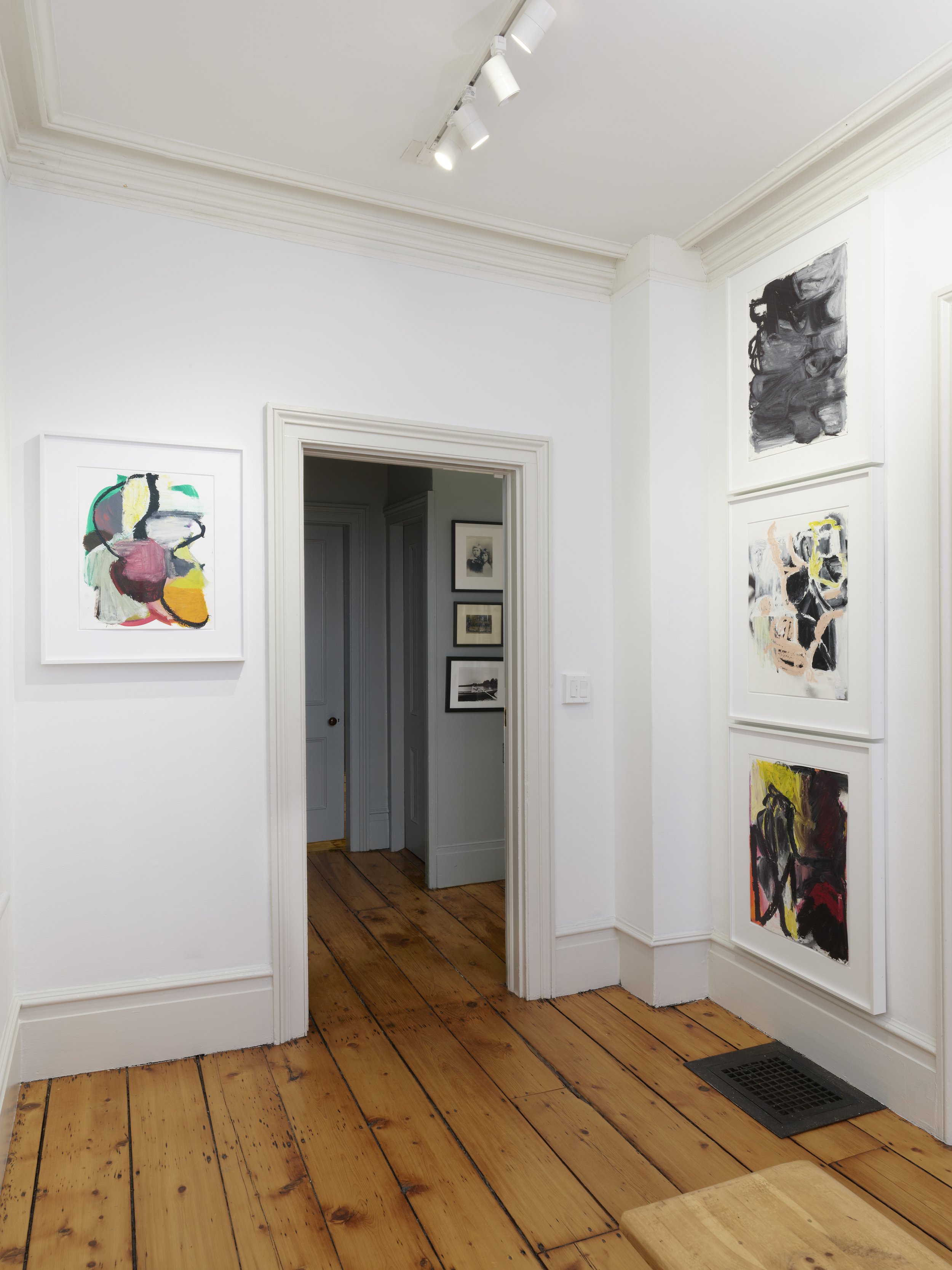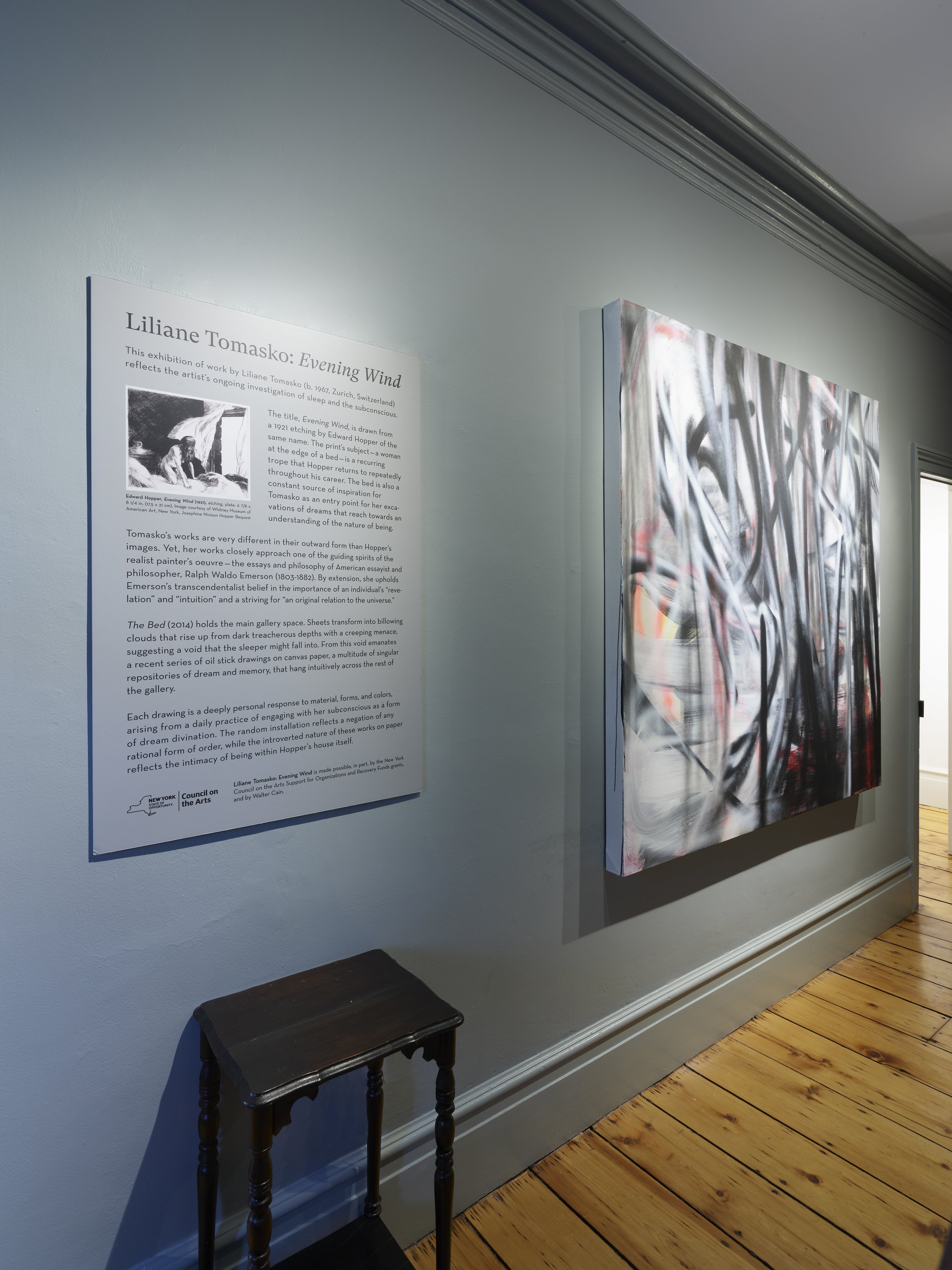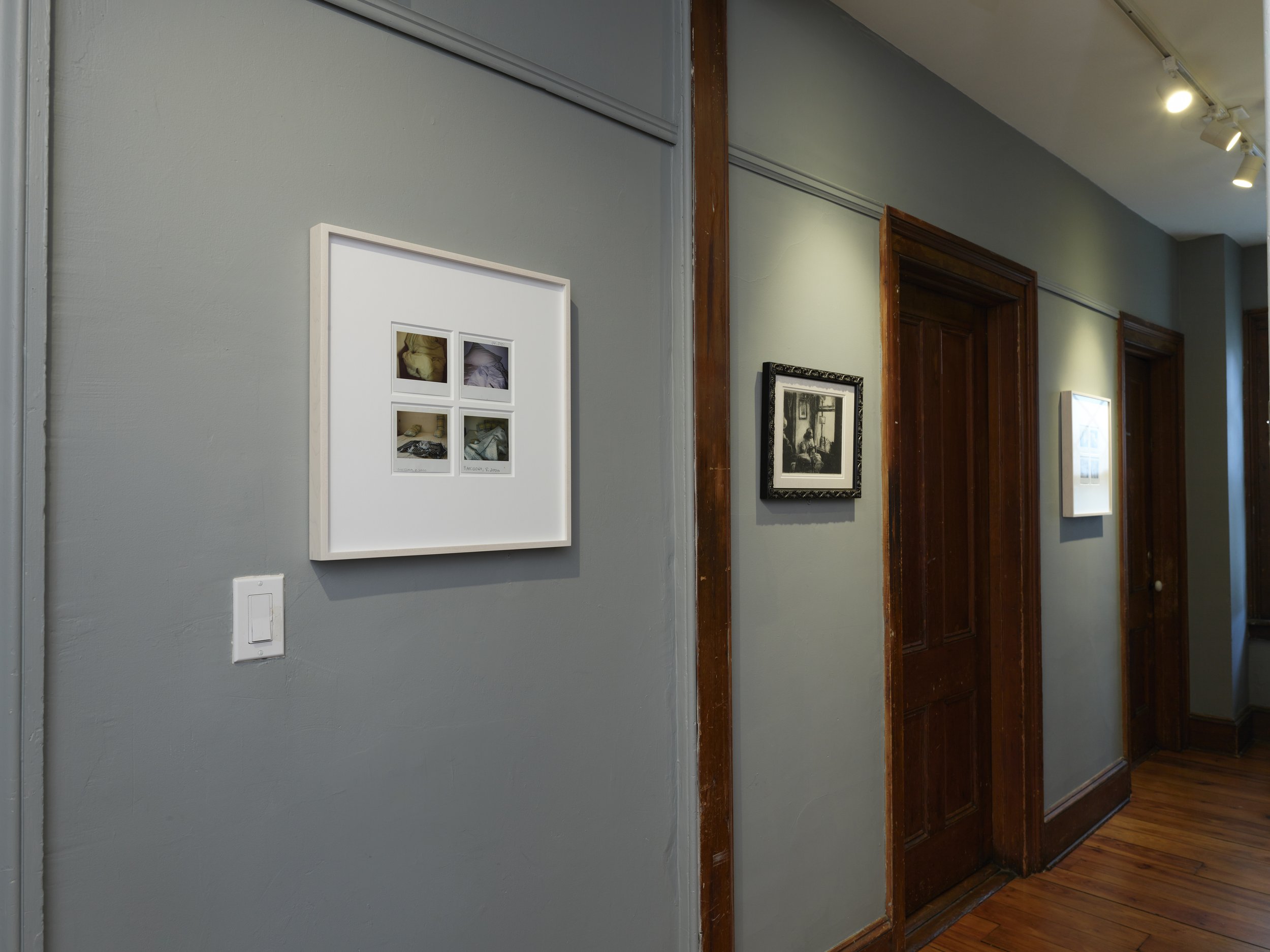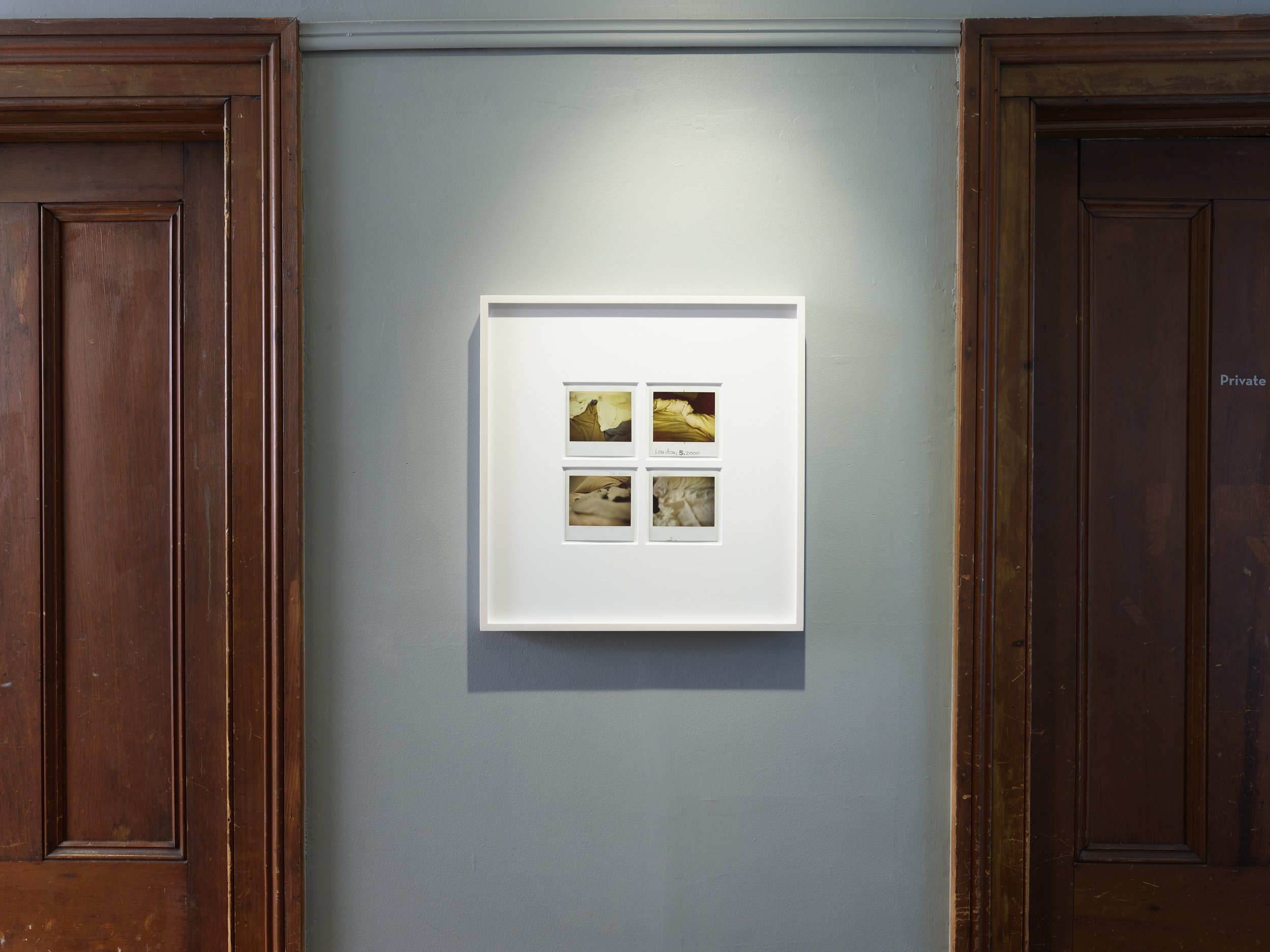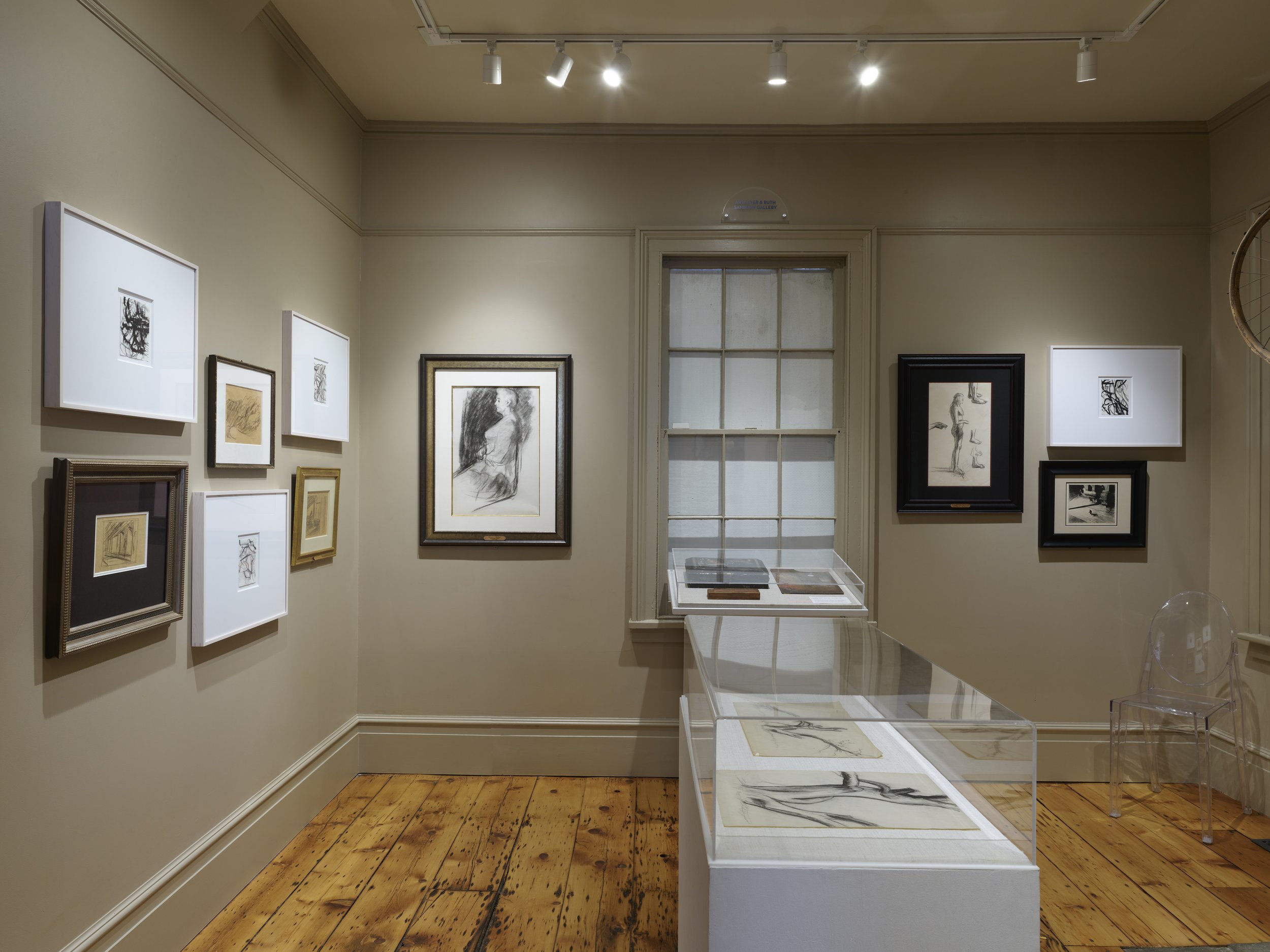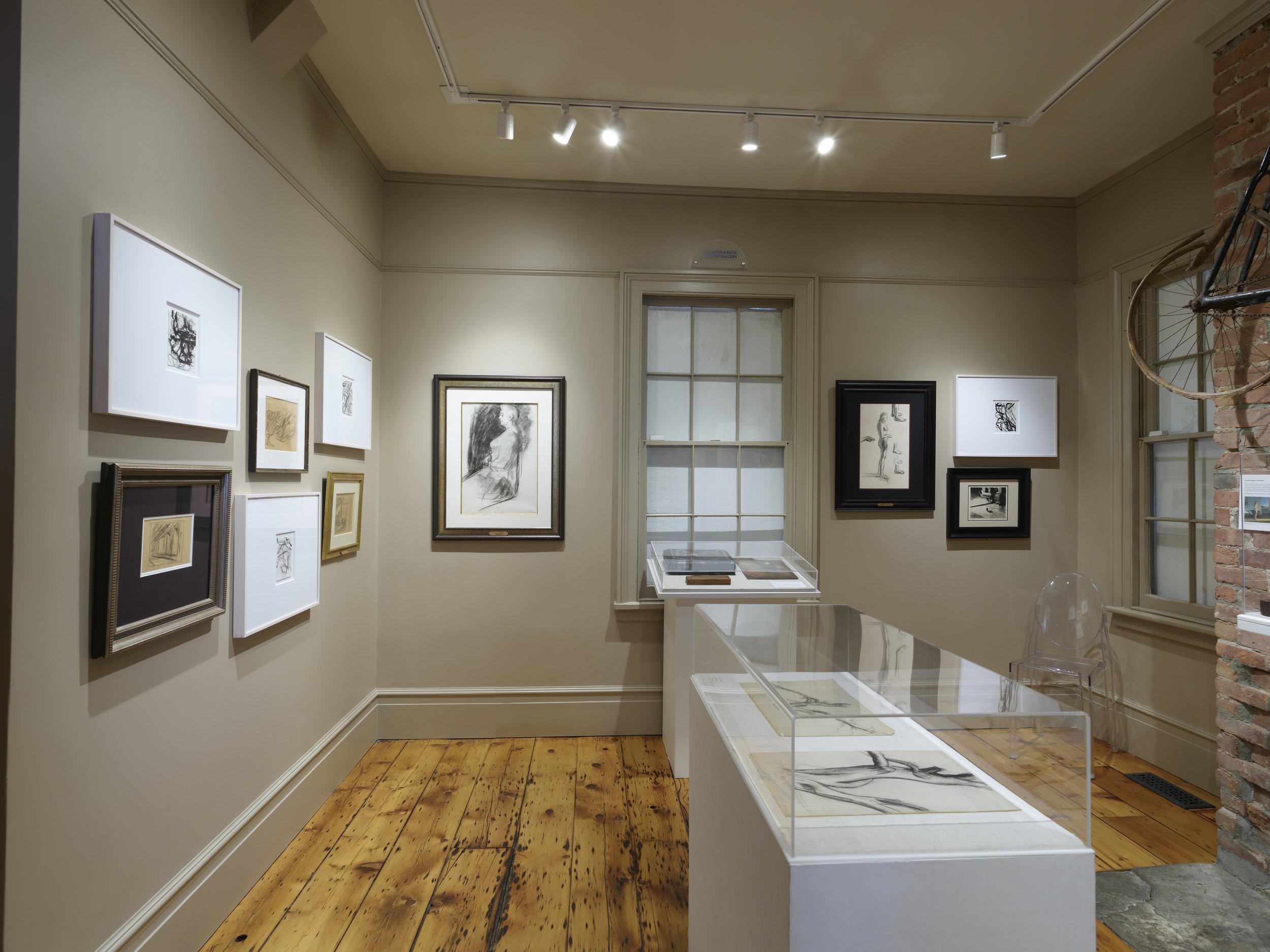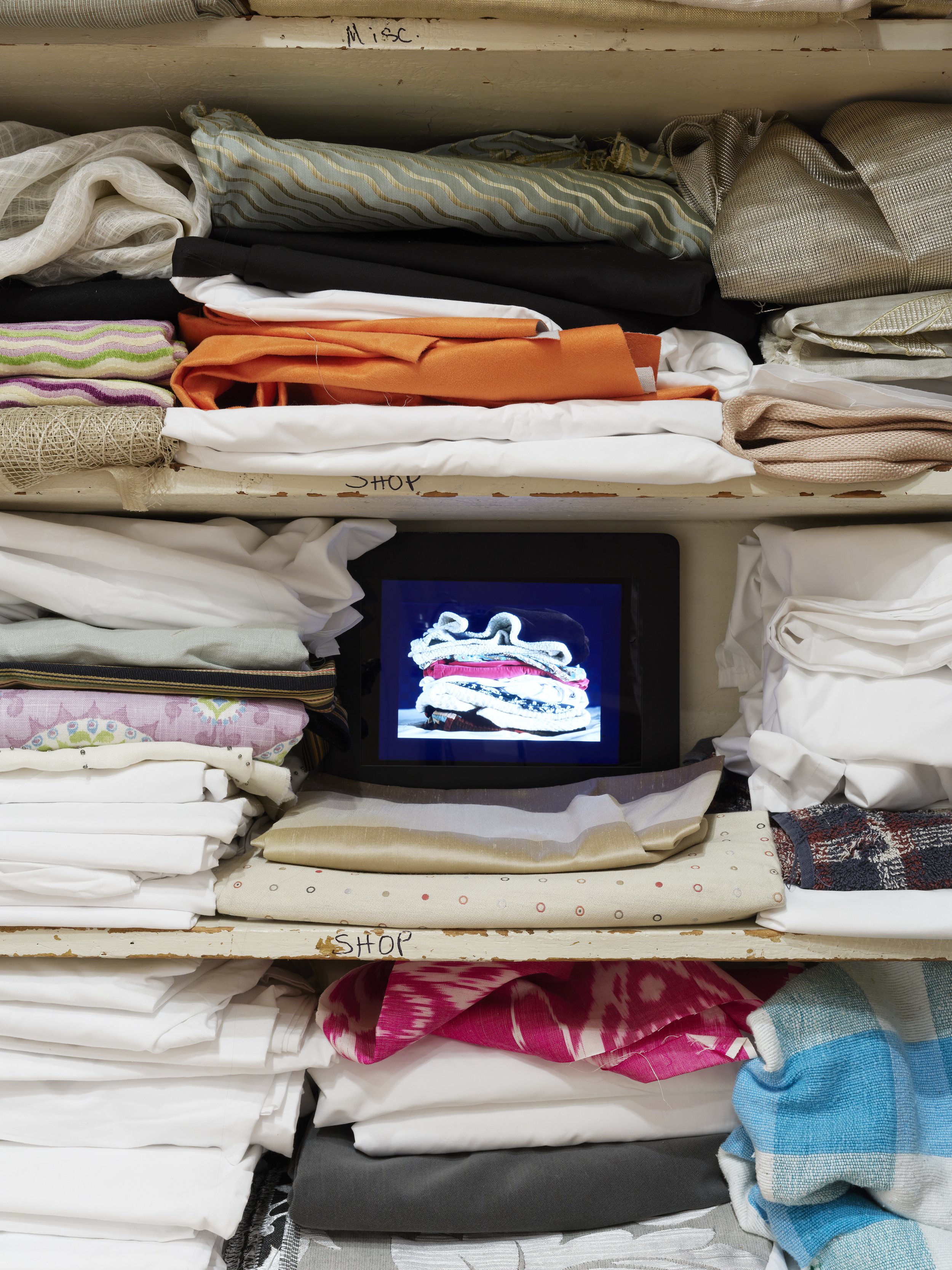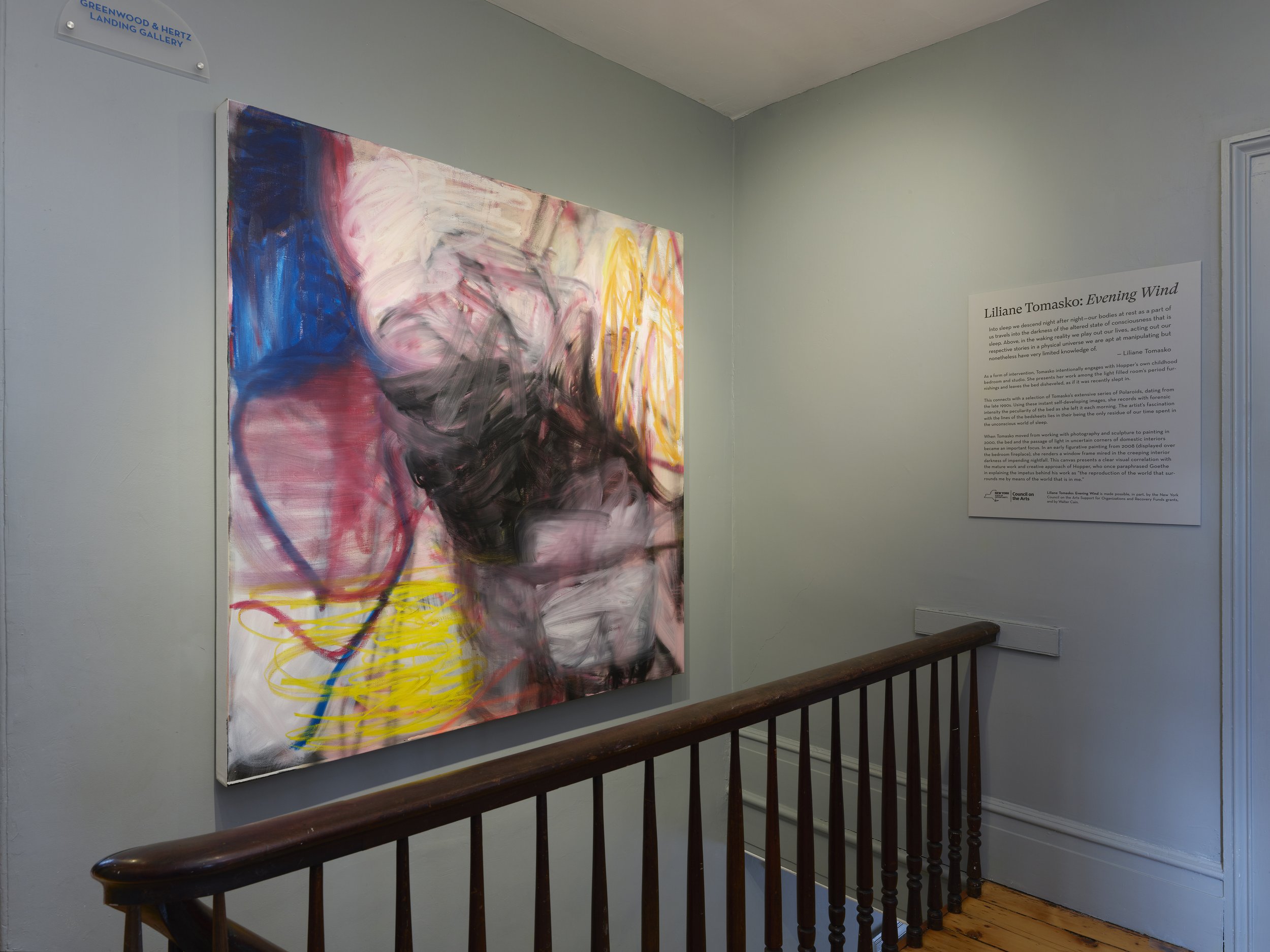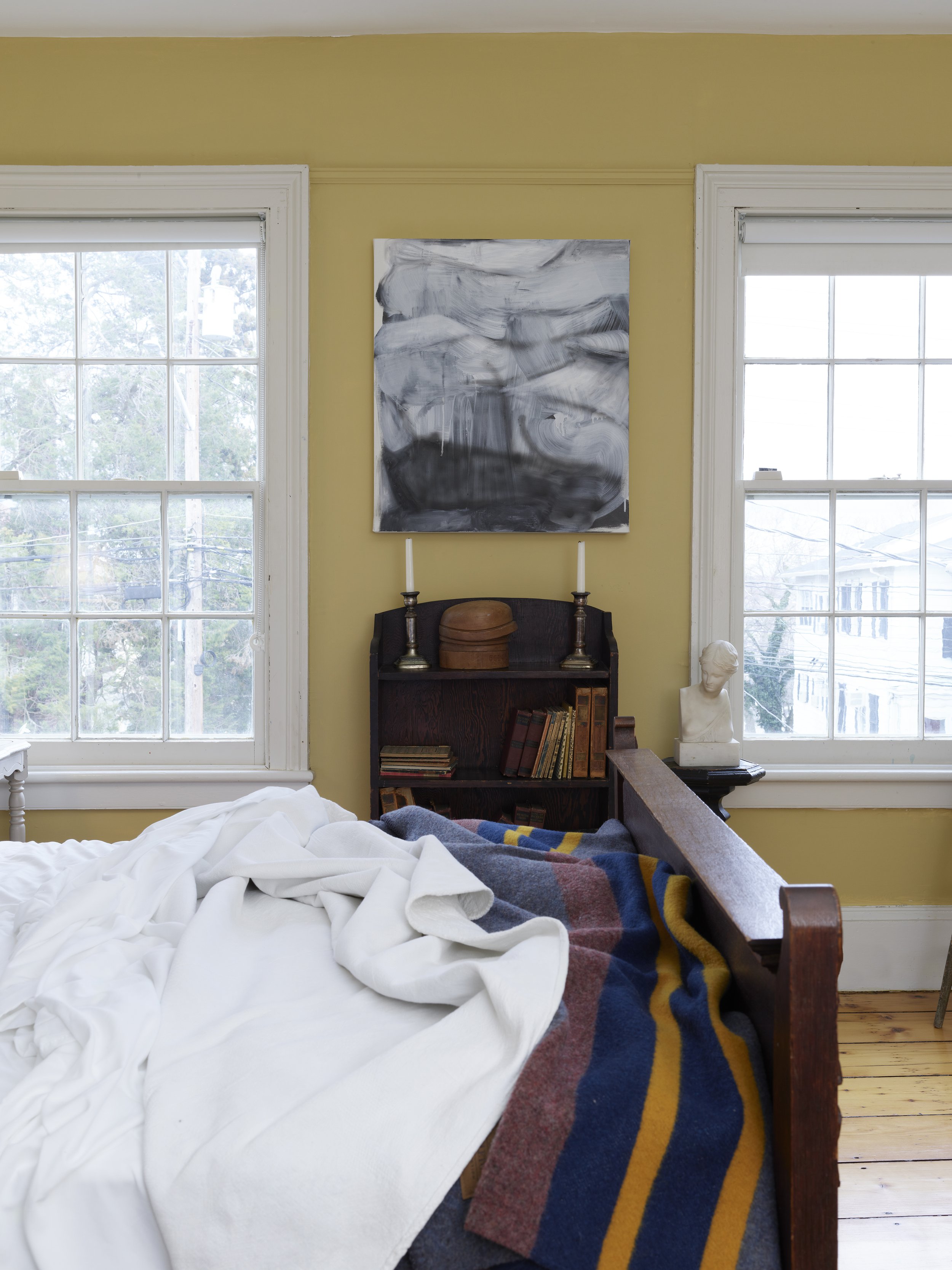Liliane Tomasko: Evening Wind
Edward Hopper House
Curated by Faye Fleming
April 1 through July 24, 2022
Exhibition Review by Raphy Sarkissian
One of the most intriguing exhibitions of recent years is Liliane Tomasko: Evening Wind at the Edward Hopper House. Scattered somewhat randomly upon the walls of Hopper’s living room and dining room in Nyack, the abstract painterly marks on surfaces of paper, notwithstanding their aggregation of luscious streaks and seductive palettes of subdued and brilliant hues, register as self-contained entities. Yet the seeming abstractions of Tomasko, framed within her overall body of work and the context of Hopper’s self-absorbed human figures, translate as conduits to the perceptual states of the human subject, as cryptographs of the subconscious, as passages toward the unconscious. These works compel us to reconsider the referent of the term “abstraction.”
Liliane Tomasko, Evening Wind, installation view. © Liliane Tomasko. Photo: Elisabeth Bernstein. Courtesy of the artist and Edward Hopper House.
If abstraction has become ordained as modernism’s paramount phenomenon, its definition may always remain a predicament. Withdrawn from the social field into the domain of pure sensory cognition, utopian abstraction’s endeavor to liberate vision invokes a disembodied faculty of perception. As Fredric Jameson writes in The Prison-House of Language, “This radical inversion of the priorities of the work of art is a critical revolution analogous to Saussure’s disconnection of the referential, or to Husserl’s bracketing in phenomenology; its intent is to suspend the common-sense view of the work of art as mimesis (i.e. possessing content) and as source or purveyor of emotion.” [1]
Liliane Tomasko, Evening Wind, installation view. Background: A Nightmare, 2019, acrylic and oil on linen, 63 by 63 inches. © Liliane Tomasko. Photo: Elisabeth Bernstein. Courtesy of the artist and Edward Hopper House.
Looming upon the wall facing the entrance to Hopper’s bedroom, Tomasko’s The Nightmare (2019) reveals swirling sweeps of grays and swaths of subdued pinks, set alongside staccatos in orange on the upper right and yellow on the lower left. These gestural traces of Tomasko’s hand suspend the viewer’s conviction in such lexical binarisms as intention/impulse, restraint/spontaneity, imagery/abstraction, imaginary/real. The energetic strokes that are set against delicate ones caress the boundaries of reality and dreams. On the phenomena of sleep and wakefulness, Tomasko has reflectively stated, “Into sleep we descend night after night … in the waking reality we play out our lives, acting out our respective stories in a physical universe we are apt at manipulating but nonetheless have very limited knowledge of.” [2]
Liliane Tomasko, Evening Wind, installation view. © Liliane Tomasko. Photo: Elisabeth Bernstein. Courtesy of the artist and Edward Hopper House.
Mounted alongside such works by Hopper as the etching Night Shadows (1921) and the drawing Study for “A Woman in the Sun” (1961), Tomasko’s black-on-white oil pastels, executed in 2019, appear as gestural rehearsals of The Nightmare. Yet as much as they reverberate the unconscious, they reinstate the infeasibility of its thorough excavation. Whereas the drawings of Hopper represent silhouettes, surfaces, shades, spaces of the visible world, and human figures, charging the latter psychologically within his paintings, the drawings of Tomasko come forth as residues of the mark-making process directed toward the interiority of the self and that of the perceiving subject, the gulf between the subconscious and unconscious.
Liliane Tomasko, Evening Wind, installation view. © Liliane Tomasko. Photo: Elisabeth Bernstein. Courtesy of the artist and Edward Hopper House.
Hopper’s etching titled Evening Wind (1921), though not on view in the exhibition but illustrated on the wall, uncannily brings together pictorial representation, abstraction, and the in-betweens. Portraying a nude woman kneeling on her bed and facing an open window, the pure void here acts as a signifier of an exterior space framed through the pictorial parts of architectural elements, the curtain on the right and the curved footboard of the bed. By representing interiority and exteriority, while evoking night and day at once, the etching takes on a phenomenological dimension through the words of Maurice Merleau-Ponty’s discussion of color as a “sense experience” when he writes, “The relations of sentient to sensible are comparable with those of the sleeper to his slumber: sleep comes when a certain voluntary attitude suddenly receives from outside the confirmation for which it was waiting.” [3] Crunched up and twisted forms define the pictorial space of Tomasko’s The Bed (2014), echoing hints of the corporeality left behind by the sleeper’s body. Though the amorphous shapes floating within the pictorial space of The Bed may operate as self-referential forms, the painting takes on a somatic quality in relation to the Polaroid series collectively named as “Beds and Mattresses” (1996–2000), where the folds and creases of the blankets and sheets range from legibility to illegibility.
Liliane Tomasko, Evening Wind, installation view. On the faceing wall, to the left: The Bed, 2014, oil on linen, 76 by 70 inches. © Liliane Tomasko. Photo: Elisabeth Bernstein. Courtesy of the artist and Edward Hopper House.
Tomasko’s austere oil painting Last Light Lex (2008), hung above the fireplace of Hopper’s bedroom, imparts a partly abstracted detail of the window motif that recurs in numerous paintings by Hopper. In the essay from the lavish and fully illustrated catalogue, the curator of the exhibition Faye Fleming insightfully ties Tomasko’s early paintings of beds and windows to a series of Hopper’s paintings: Hotel Room (1931), Morning in a City (1944), Morning Sun (1952), Western Motel (1957), and A Woman in the Sun (1961). Addressing these psychologically charged images through Hopper’s reaction to Ralph Waldo Emerson’s transcendentalism, Fleming maps the concepts of “revelation” and “intuition” to Tomasko’s corpus. [4] That body of work had from its outset employed photography, video, painting, and works on paper as mediums for representing “what comes from within, from the self,” as noted by Carole Perry and Kathleen Motes Bennewitz in the preface of the catalogue. [5]
As disclosed through this mini-retrospective, Tomasko’s formally shifting yet thematically sustained two-decade output has encompassed portrayals of the exteriority of the world and interiority of the subject through slippery instances of vision. Just as Hopper’s paintings beg for narratives outside of the picture frame, the abstractions of Tomasko beg for metaphysical contents. Through looping, intertwined lines, and smudges rousing the interiority of the perceiving subject, Tomasko’s most recent paintings exhibit the confines of human knowledge in untangling the sensory apparatus. In Evening Wind, temporal alterations in states of consciousness are manifested through vivid gestures, where abstraction unveils more than that which meets the eye.
Notes
Fredric Jameson, The Prison-House of Language: A Critical Account of Structuralism and Russian Formalism (New Jersey: Princeton University Press, 1972), p. 83.
Liliane Tomasko, cited within the wall text of the exhibition.
Maurice Merleau-Ponty, The Phenomenology of Perception (1945 in French), trans. Colin Smith (1962; London and New York: Routledge, 1995), p. 211.
Faye Fleming, “An Evening Wind,” in Liliane Tomasko: An Evening Wind (Altenburg, Germany: DZA Printers, 2022), pp. 9-23, p. 22.
Carole Perry and Kathleen Motes Bennewitz, in Liliane Tomasko: An Evening Wind, p. 2.
“… in the waking reality we play out our lives, acting out our respective stories in a physical universe we are apt at manipulating but nonetheless have very limited knowledge of.” —Liliane Tomasko
Liliane Tomasko, Evening Wind, installation view. © Liliane Tomasko. Photo: Elisabeth Bernstein. Courtesy of the artist and Edward Hopper House.
Edward Hopper, Evening Wind, 1921. Etching,
sheet: 13 3/8 by 16 inches, slate: 6 7/8 by 8 1/4 inches. Whitney Museum of American Art, New York; Josephine N. Hopper Bequest
© Heirs of Josephine N. Hopper/Licensed by Artists Rights Society (ARS), New York.
Liliane Tomasko, Evening Wind, installation view. © Liliane Tomasko. Photo: Elisabeth Bernstein. Courtesy of the artist and Edward Hopper House.
Liliane Tomasko, Evening Wind, installation view. © Liliane Tomasko. Photo: Elisabeth Bernstein. Courtesy of the artist and Edward Hopper House.





